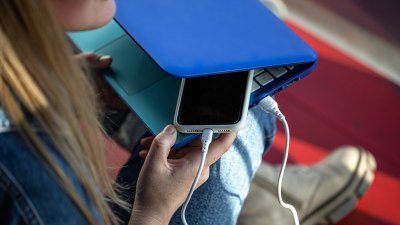Why Your Phone Battery Dies Right When You Need Your Boarding Pass
Explore common reasons your phone battery dies unexpectedly and tips to prevent it.

Image by pvproductions on Freepik
There’s nothing more frustrating than pulling out your phone to find that the battery has died just when you need to display your boarding pass. This is a scenario that many travelers are all too familiar with. You’ve just completed check-in, and as you head toward security, you realize that your phone is dead. But why does this happen, and what can you do to ensure it doesn’t occur at a critical moment? In this article, we’ll delve into the common reasons behind premature battery death, as well as offer practical tips to prolong battery life when traveling.
Understanding Battery Drain
To tackle the issue of battery drainage, it’s essential to first understand how smartphone batteries work. Most smartphones utilize lithium-ion batteries which provide a great deal of energy while being lightweight and compact. However, they do have their limitations. Battery life can be affected by several factors, including age, temperature, and how apps are used. Over the years, as your battery undergoes numerous charge cycles – the processes of charging and discharging – its capacity diminishes. If your phone is older, it could struggle to hold a charge, delivering less power when you need it most.
The Impact of High Usage
Traveling often involves increased phone usage. Whether you're checking flight updates, messaging friends, or using maps, these activities can be incredibly taxing on your device's battery. Streaming music or videos, utilizing location services, and having multiple apps open simultaneously can significantly drain battery life faster than expected. It's not uncommon for users to underestimate how quickly their device is losing power under high usage. Additionally, if you're scrolling through social media or browsing the internet while waiting in line, you may find your screen brightness turned up, which is another obstacle to battery conservation.
Temperature Extremes
Temperature plays an important role in phone performance, including battery longevity. Batteries can overheat in hot environments and become inefficient in cold settings. Airports can have varying temperatures, particularly in terminal areas, where air conditioning is blasting during the summer months. When exposed to extreme heat, your phone may become too warm, leading to quicker battery drain as safety mechanisms engage to protect its internal components. Conversely, cold weather can cause your battery to discharge unexpectedly quickly. If you’re waiting outside in winter or facing high temperatures during summer layovers, this can exacerbate the situation.
Background App Activity
Another significant factor that contributes to battery drain is background app activity. Many apps continue to run processes, even when you’re not actively using them. GPS tracking, notifications, automatic updates, and syncing can drain your battery without you realizing it. Apps like location services or social media platforms tend to be particularly energy-hungry. To mitigate this issue, it's essential to close apps you’re not using actively and disable features like automatic updates and background app refresh whenever possible.
Screen Brightness and Timeout Settings
Your smartphone's screen is one of the most significant power consumers. Brightness settings, particularly if set to high, can consume battery quickly. Many phones also come with features like “adaptive brightness” or “night mode,” which help conserve battery life. You can also reduce the screen timeout setting, which determines how long your screen stays on when it’s not in use. If your screen is constantly active while you await boarding announcements or during your travels, you are wasting precious battery life. Check your settings to find the ideal balance between visibility and battery conservation.
Network Connectivity
While traveling, your phone often switches between various networks, such as 4G, 5G, and Wifi. Each switch requires power, and searching for a stable connection can drain your battery rapidly. This is particularly true when roaming in unfamiliar areas or when network signals are weak. During these moments, it may be worthwhile to enable airplane mode if you're not using your device for communications, or to turn off your mobile data if you have access to reliable Wifi to save battery.
Pre-Travel Preparations
To ensure that your battery lasts through your travel day, proactive behavior is key. Before you leave for the airport, fully charge your phone and switch on battery-saver mode. This can tweak settings in the background to consume less power. Many smartphones come equipped with power-saving features that limit processes or decrease performance to extend battery life. Familiarize yourself with these settings, and consider running your phone in battery saver mode during your flight. Additionally, download boarding passes and other important documents ahead of time, so you don't have to rely on constant data updates once you're on your way.
Portable Power Solutions
Incorporating a portable charger or power bank into your travel essentials can significantly reduce the frustration of a dead battery. These handy devices allow you to recharge your phone quickly while on the go without needing an electrical outlet. When selecting a power bank, pay attention to its capacity and compatibility with your device. Ensure that it has enough power to charge your phone at least once or twice. Keeping it in your carry-on bag provides peace of mind and a practical solution should your phone start running low on power.
Environmentally Friendly Practices
For those interested in environmentally sustainable practices during travel, consider turning off your phone when not in use, like during long flights. Offline functionality, including viewing downloaded boarding passes, can significantly reduce battery usage while preventing unnecessary charging needs. Some airports have charging stations that allow travelers to recharge without needing a portable charger. Take advantage of these stations whenever possible, as they also promote environmentally responsible travel.
Importance of Regular Maintenance
Finally, keeping your phone updated with the latest software and operating system can also optimize battery life. Manufacturers frequently release updates that can fix bugs affecting battery performance or introduce new energy-saving features. Regularly check for updates to keep your device performing at its best. Moreover, managing storage can also impact performance, as a full device may lead to a sluggish phone that consumes extra battery. Regular maintenance goes a long way toward ensuring your phone lasts when you need it the most.
Conclusion
Next time you find your phone battery dead just when you need to access your boarding pass, consider the various factors that might have contributed to the inconvenience. Understanding how your smartphone functions and taking precautions to save battery life can help you avoid this exasperating scenario in the future. Remember to keep your device charged, disable unnecessary apps, maintain optimal settings, and consider having backup power options handy. With a little forethought, you can ensure that your phone remains a reliable travel companion, even in critical moments.











